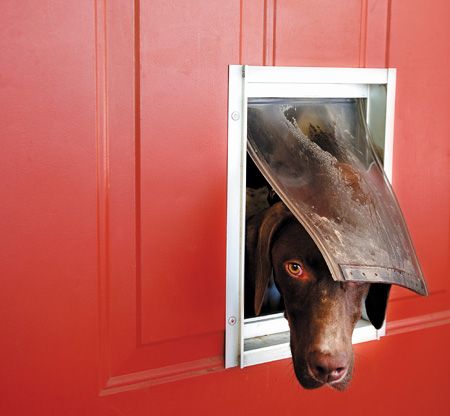The ins and outs of veterinary practice management
Practice managers, follow this advice to ensure the door of your practice is ever open.

(Getty Images)Imagine the dog at the doggie door. A world of goodies to explore and gather outside. A triumphant return to the comforts and safety of home after a successful outing. The dog owner wants to make sure all is prepared for a dog to exit (collar on, gates closed) and then re-enter without incident. This is a good way to illustrate the in-and-out nature of managing a veterinary practice. You, the practice manager, are the dog owner, maintaining the balance of ins and outs to ensure a healthy bottom line.
On the way out
The first thing in this area that springs to mind is inventory. These physical items are going out the door in the hands of your veterinary clients. Are the items priced to cover not only their cost but also the cost of ordering, shipping, unpacking and stocking? There are lots of formulas for making sure that you are covering the cost of items (see Top 3 ways to price products and services and A veterinarian's master class on pricing), but you will need to tailor your own, taking into account your own overhead costs. Also consider the costs of similar products purchased online and educate your team on how to counter price complaints.
And don't forget to monitor how your clients feel as they leave. Are good feelings going out the door too? Double-check that your customer service is exquisite and unparalleled. A good way to gauge this is through follow-up calls or emails. Make sure you are checking online for Google reviews. A large number of our new clients say that those Google reviews were why they gave us a try (see What do you call a room full of practice managers?).
Coming back in
Profits must come in the door to maintain a feasible business. We must generate revenue. If clients aren't charged for services we've rendered, it's like setting dollar bills on fire. Not only is the revenue lost when charges are missed, but the client doesn't even realize it. And if you're going to discount, be sure that the client knows the gift that they received and the value of it.
Make sure that your doctors and team members are recommending appropriate services as well. It's easy to think that we know what clients want, but too many times we're wrong. Set up preset estimates in your veterinary software using the gold standard diagnostic plan for common issues. That way, no matter which associate sees the pet, he or she starts with the standard that the practice suggests. (You can see standard work-up issues all over dvm360.com, for example: How to get through tough money talks with veterinary clients, Serve up easy estimates and How do we communicate veterinary protocols to unhappy clients?) Have a team meeting to get everyone's input on what the estimates should say.
When you explain treatment to the client, they may say that they want to skip many of the tests. That's OK because you can mark them offered and declined in the medical record, covering your own liability. Everyone on the team knows that they offered the best options for the pet and because all clients are exposed to the suggested diagnostics the first time, if they have to call back because the pet failed to respond, they will be mentally prepared to do more.
The enterprise of the revolving door
Keeping an eye on inventory costs, evaluating customer service, not missing charges and streamlining medical recommendations with preset estimates are good ways to keep the door swinging. To happy adventures ahead!
Kathryn Primm, DVM, owns and practices at Applebrook Animal Hospital in Ooltewah, Tennessee, and is the author of Tennessee Tails: Pets and Their People.
Veterinary Heroes: Patricia Kennedy Arrington, DVM, CVFP
December 1st 2024As a leader in 24-hour veterinary care and a champion for women in the field, Patricia Kennedy Arrington, DVM, CVFP, has dedicated her 50-year career to transforming veterinary medicine and inspiring future practitioners.
Read More
Veterinary Heroes: Ann E. Hohenhaus, DVM, DACVIM (Oncology, SAIM)
December 1st 2024A trailblazer in small animal internal medicine, Ann E. Hohenhaus, DVM, DACVIM (Oncology, SAIM), has spent decades advancing the profession through clinical expertise, mentorship, and impactful communication.
Read More